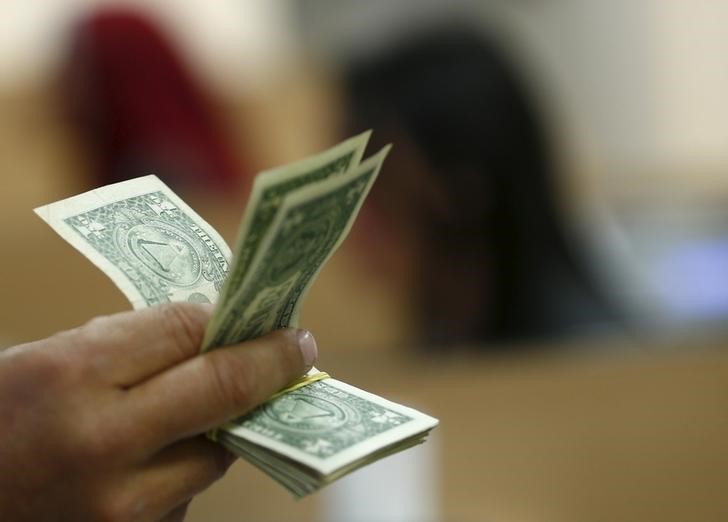Investing.com - The dollar edged higher against a basket of the other major currencies on Friday as expectations for faster hikes in U.S. interest rates helped the currency extend its recovery from three year lows.
The U.S. dollar index, which measures the greenback’s strength against a basket of six major currencies, was up 0.17% to 89.81 in late trade. The index climbed 0.9% for the week and is up around 2% since hitting a three year low of 88.15 on February 16.
Demand for the dollar continued to be underpinned after the minutes of the Federal Reserve's January meeting underlined expectations for more aggressive monetary tightening this year.
Wednesday’s minutes of the Fed's Jan. 30-31 policy meeting showed that policymakers growing confidence in the U.S. economy bolstered their plans to continue raising short-term interest rates as soon as next month.
“A majority of participants noted that a stronger outlook for economic growth raised the likelihood that further gradual policy firming would be appropriate,” the minutes said.
The dollar was little changed against the yen on Friday, with USD/JPY at 106.78 in late trade. The pair was 0.5% higher for the week.
The euro was a touch lower, with EUR/USD slipping 0.21% to 1.2304 as investors remained cautious ahead of the Italian general election due to be held on March 4.
Sterling pushed higher, with GBP/USD rising 0.15% to 1.3973 late Friday. Sterling continued to remain supported by expectations for a rate hike by the Bank of England in the coming months.
The Canadian dollar was also higher on Friday, with USD/CAD falling 0.39% to 1.2654 in late trade, after data showing that Canadian inflation came in stronger than expected in January.
In the week ahead, investors will be awaiting remarks by new Fed Chair Jerome Powell when he faces questions from both houses of the U.S. Congress in semi-annual testimony starting on Tuesday.
In the euro area, Wednesday’s inflation data will be closely watched amid speculation over how soon the European Central Bank will start unwinding its stimulus program.
Ahead of the coming week, Investing.com has compiled a list of these and other significant events likely to affect the markets.
Monday, February 26
ECB head Mario Draghi is due to testify on monetary policy and the inflation outlook before the European Parliament Economic and Monetary Affairs Committee, in Brussels.
The U.S. is to publish data on new home sales.
Fed Governor Randal Quarles is to speak at an event in Washington.
Tuesday, February 27
New Zealand is to produce data on trade.
In the euro zone, Germany is to release preliminary inflation data.
Fed Chairman Jerome Powell is to testify on the Semiannual Monetary Policy Report before the House Financial Services Committee, in Washington.
The U.S. is to release data on durable goods orders and consumer confidence.
Wednesday, February 28
New Zealand is to publish a report on business confidence.
China is to publish PMI data on manufacturing and service sector growth.
The euro zone is to release preliminary inflation data.
The U.S. is to publish revised data on fourth quarter growth, as well as a report on business activity in the Chicago region and data on pending home sales.
Thursday, March 1
Australia is to release data on private capital expenditure.
China is to publish its Caixin PMI.
The UK is to publish data on manufacturing activity.
The U.S. is to publish what will be a closely watched report on personal income and spending, which includes the personal consumption expenditures inflation data, the Fed's preferred metric for inflation.
The U.S. is also to report on jobless claims and the Institute of Supply Management is to release data on manufacturing activity.
Fed Chairman Jerome Powell is to testify on the Semiannual Monetary Policy Report before the Senate Banking Committee, in Washington.
Friday, March 2
In the euro zone, Germany is to release data on retail sales.
The UK is to publish data on construction activity.
Bank of England Governor is to speak at an event in Edinburgh.
Canada is to publish its monthly report on economic growth.
